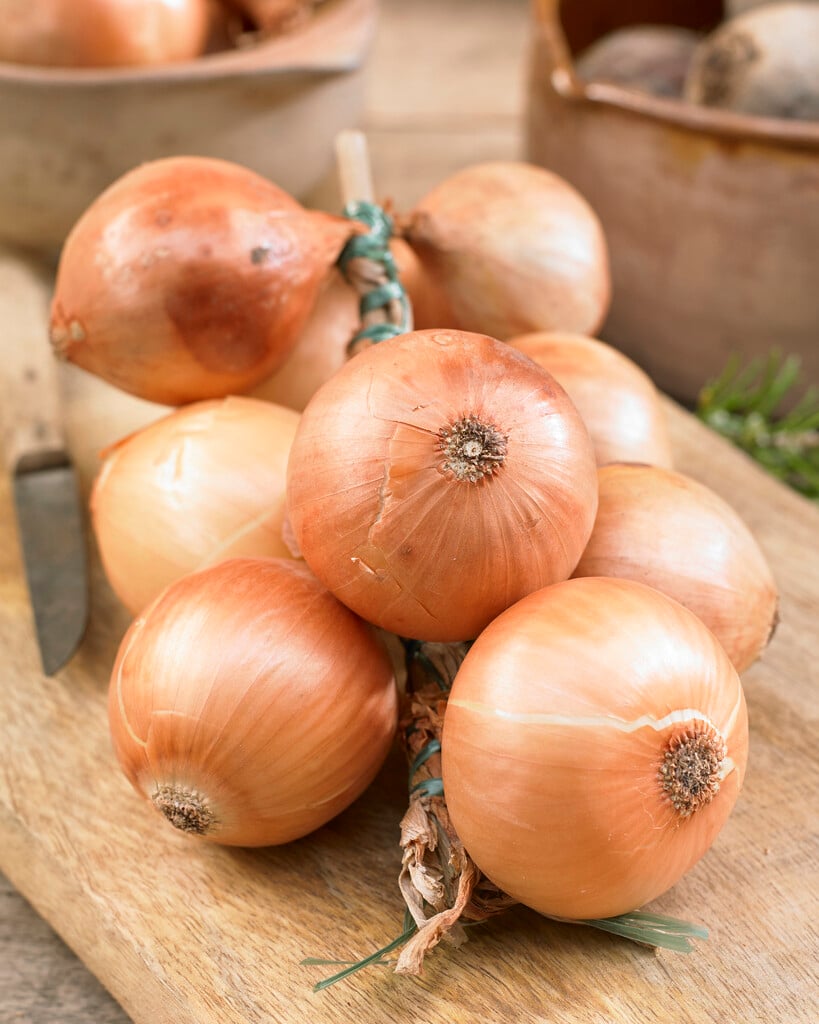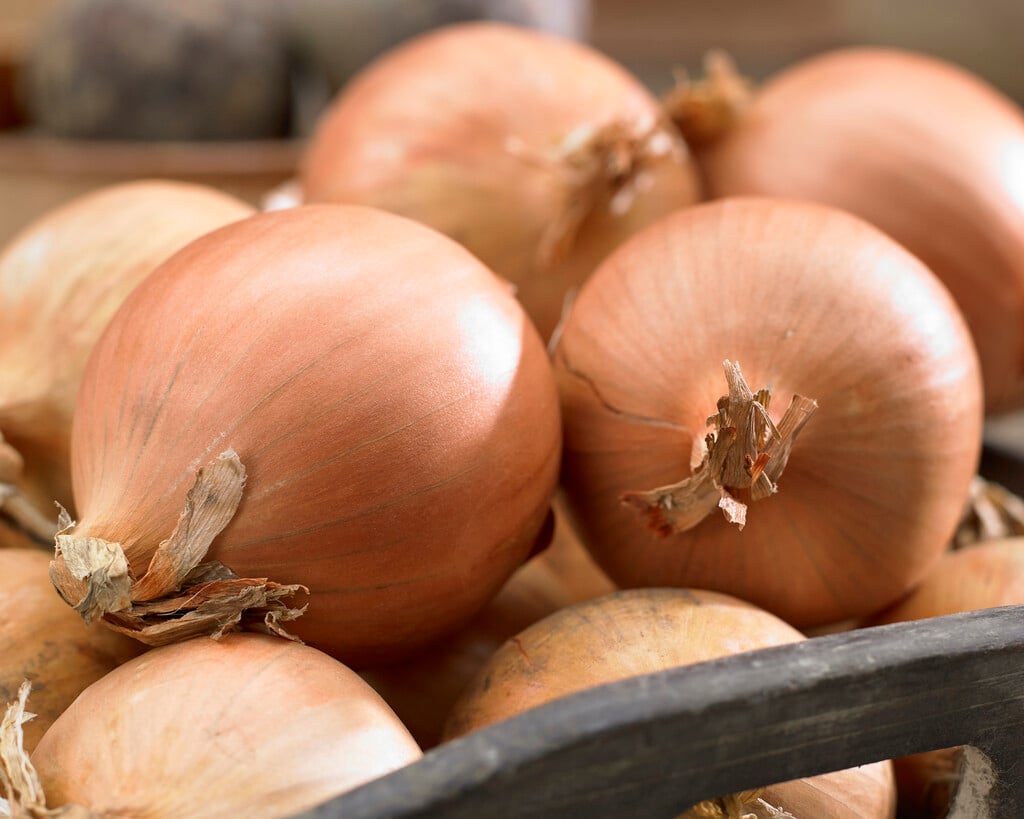Allium cepa
onion
This is the original plant from which many varieties of onion, shallot and spring onion have been bred. It has hollow green or blue-green fleshy, deciduous leaves which are edible when young. The bulb will vary in size, shape, colour depending on the cultivar
Size
Ultimate height
0.1–0.5 metresTime to ultimate height
1 yearUltimate spread
0.1–0.5 metresGrowing conditions
Moisture
Moist but well–drainedpH
Alkaline, NeutralColour & scent
| Stem | Flower | Foliage | Fruit | |
| Spring | Green | |||
|---|---|---|---|---|
| Summer | Green Brown | |||
| Autumn | Green | |||
| Winter |
Position
- Full sun
Aspect
East–facing or North–facing or South–facing or West–facing
Exposure
Exposed or Sheltered Hardiness
H4Botanical details
- Family
- Amaryllidaceae
- Native to GB / Ireland
- No
- Foliage
- Deciduous
- Habit
- Clump forming
- Genus
Allium are bulbous herbaceous perennials with a strong onion or garlic scent, linear, strap-shaped or cylindrical basal leaves and star-shaped or bell-shaped flowers in an umbel on a leafless stem
- Name status
Correct
How to grow
Cultivation
Grow in fertile, moisture retentive, but well-drained soil in full sun. Thin-out young plants growing from seeds in spring. Yellowing and toppling of the foliage is a sign that the shallots are reaching maturity. Lift and store in a cool dry place. See how to grow: onions for further advice
Propagation
Propagate by seed or by onion sets. See how to grow: onions or sowing vegetable seeds
Suggested planting locations and garden types
Pruning
No pruning required
Pests
May be susceptible to onion fly, leek moth and narcissus eelworm
Diseases
May be susceptible to onion white rot, onion downy mildew, leek rust and onion neck rot. Bolting, producing flowers, may be a problem
Get involved
The Royal Horticultural Society is the UK’s leading gardening charity. We aim to enrich everyone’s life through plants, and make the UK a greener and more beautiful place.

